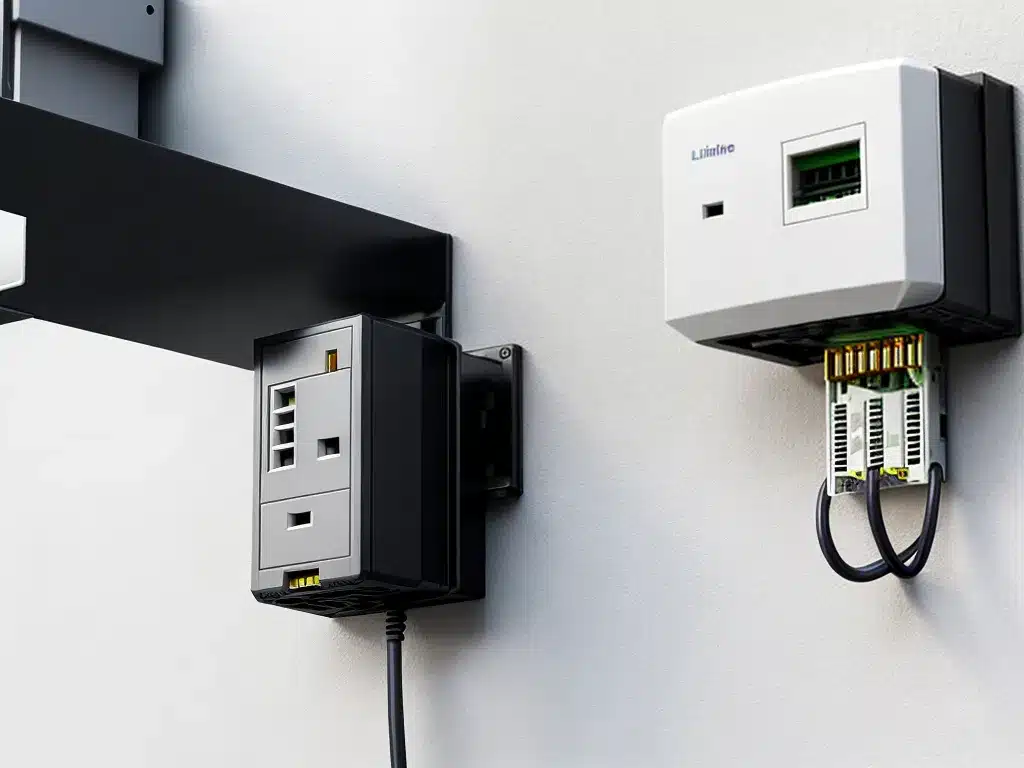
Having a strong Wi-Fi signal throughout your home is crucial for enjoying fast internet speeds and reliability. But Wi-Fi range can be limited by the size and construction materials of your home. Powerline networking offers an affordable way to extend your Wi-Fi coverage into those dead zones without running ethernet cables or buying repeaters.
How Powerline Networking Works
Powerline networking uses your existing electrical wiring to create a wired network connection between rooms. It works by sending data through your home’s electrical circuitry.
To set up a powerline network, you plug Ethernet-enabled powerline adapters into wall outlets in different areas of your home. The adapters connect to each other over your home’s electrical wiring. One powerline adapter connects to your router via Ethernet cable to gain internet access. Other adapters placed elsewhere in your home allow you to connect devices via Wi-Fi or Ethernet.
Data is transmitted between powerline adapters as electrical signals along the same wires that carry electricity. The adapters function like mini routers, extending your network coverage. This creates a faster, more reliable connection than Wi-Fi alone when transmitting data over long distances or through walls and floors.
Benefits of Powerline Networking
There are several advantages to using powerline adapters to extend your Wi-Fi network:
-
Increased range – Powerline networking can extend your Wi-Fi zone to anywhere in your home with an outlet. No more dead zones!
-
Faster speeds – Powerline adapters provide faster data transfer rates than Wi-Fi when connecting over long distances, multiple floors, or through thick walls.
-
Reliability – Powerline networking offers a more reliable connection since it doesn’t deal with wireless interference.
-
Easy setup – Powerline adapters are plug-and-play. No rewiring, cable running, or router configuration needed.
-
Multiple access points – Add powerline adapters in multiple rooms to create several Wi-Fi access points throughout your home.
-
Security – Data transmitted over powerline networks is encrypted for protection against eavesdropping.
How to Choose Powerline Network Adapters
Here are key factors to consider when shopping for powerline adapters:
-
Speed – Faster adapters provide higher data rates. Look for adapters rated for 500 Mbps, 1000 Mbps (1 Gbps) or higher. The latest standard, HomePlug AV2, offers speeds up to 2400 Mbps.
-
Number of ports – More Ethernet and/or Wi-Fi ports allow more wired and wireless device connections.
-
Wi-Fi – Adapters with built-in Wi-Fi allow you to directly connect wireless devices without a router. Dual-band Wi-Fi (2.4 + 5 GHz) provides the fastest speeds.
-
Security – Advanced encryption like 128-bit AES keeps your network safe from intruders.
-
QoS – Quality of service (QoS) features prioritize bandwidth for activities like gaming and streaming.
-
MIMO – Multi-input multi-output (MIMO) Wi-Fi uses multiple antennas for faster throughput.
-
Compatibility – Choose adapters compliant with the HomePlug AV2 standard for maximum compatibility.
-
Size/wall plugs – Pick compact adapters that plug directly into your outlets without blocking other sockets.
Setting Up a Powerline Network
Follow these steps to install powerline adapters:
- Place adapters into wall outlets in rooms where you want Wi-Fi coverage.
- Connect one powerline adapter to your router with an Ethernet cable. This becomes the base unit.
- Connect additional adapters in other rooms to extend coverage.
- Press the Sync button on your powerline adapters to securely connect them.
- Connect wireless devices to the Wi-Fi network broadcast by the adapters.
- Optionally, connect wired devices to the Ethernet ports on the adapters for faster speeds.
That’s it! Your powerline network will now transmit data between its wired ports at fast gigabit Ethernet speeds while also extending your Wi-Fi network.
Powerline Networking Tips
-
Place powerline adapters into wall outlets, not power strips or surge protectors. This ensures the strongest signal.
-
Outlets on different circuits may provide faster speeds than those sharing a circuit.
-
Electrical noise from appliances on the same circuit can affect powerline signal quality. Avoid plugging adapters into outlets used by major appliances.
-
Older wiring impacts powerline connectivity. Adapters may not work in homes with very outdated electrical systems.
-
Position adapters away from potential sources of wireless interference like microwaves, Bluetooth and baby monitors.
Extend Your Wi-Fi Affordably With Powerline
In summary, powerline networking leverages your existing electrical system to inexpensively extend Wi-Fi range throughout your home. With powerline adapters installed in multiple rooms, you can eliminate dead zones while enjoying faster and more reliable wireless performance compared to Wi-Fi alone. Just plug them in, sync them up, and enjoy whole-home Wi-Fi extension without the hassle or cost of running ethernet cables everywhere.












